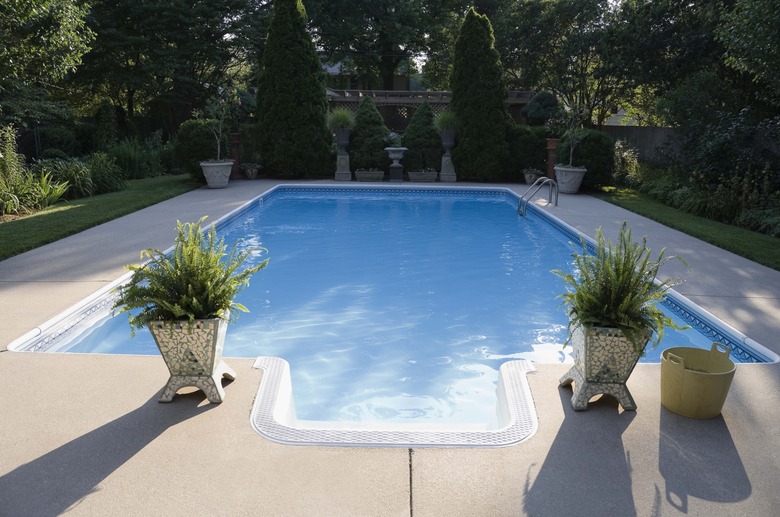How To Fill An In-Ground Pool With Water
Whether you have drained and cleaned your pool or it is brand new, your first task come pool season is to fill it. Larger pools can hold upwards of 26,000 gallons of water. Any way you choose to fill your pool will cost you money, but some options cost more than others. You can call your local fire department to see if they will fill your pool for a donation; there are companies that will truck water to your house; or there's always the good old-fashioned garden hose. The cheapest way to fill a pool is with your hose.
Step 1
Call the water company and tell them you are going to fill your swimming pool. They may only charge you the cost of the water instead of the water plus the sewer cost.
Step 2
Run the hose to the pool with enough slack that the end of the hose is on the bottom of the pool.
Step 3
Turn on the hose and allow the water to run until the water level is about 6 inches from the top edge of the pool.
Step 4
Test the water and begin treating with pool chemicals immediately to prevent algae growth and the water turning green.
Outside Water Source
Step 1
Calculate the gallons of water that your pool will hold using the formula for volume: length times width times height.
Step 2
Multiply that number by 7.5 to find the number of gallons your pool will hold. There are 7.5 gallons in each cubic foot of water.
Step 3
- Call the water company and tell them you are going to fill your swimming pool.
- Turn on the hose and allow the water to run until the water level is about 6 inches from the top edge of the pool.
Step 4
Call a water delivery service, your water carrier or the fire department to get prices based on the amount of water you calculated.
Step 5
Fill the bottom of the pool with 2 to 12 inches of water before the water delivery. This will keep your liner weighed down and prevent it from shrinking, causing it to rip.
Step 6
Treat the water immediately after filling to ward off algae or bacteria growth.
